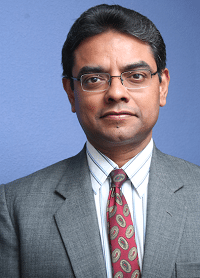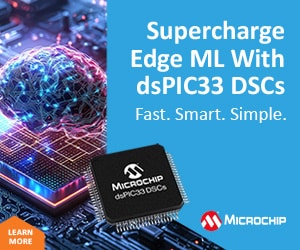Synopsys, an electronic design automation (EDA) company, supplies the global electronics market with the software, intellectual property (IP) and services used in semiconductor design, verification and manufacturing. The company’s integrated portfolio of implementation, verification, IP, manufacturing and field-programmable gate array (FPGA) solutions helps address the key challenges designers and manufacturers face today, such as power and yield management, system-to-silicon verification and time-to-results.
Pradip K Dutta, corporate vice president and managing director of Synopsys, talks to Dilin Anand of EFY about the scope of their operations in India, the trends that are shaping the semiconductor industry, and about how they aim to help the startups in India.

Q. Could you tell us a bit about your company so that our readers can understand what Synopsys stands for?
A. Synopsys is a world leader in electronic design automation (EDA). It was founded at Mountain View, California in 1986. The India operations started in 1995. Now we have over a thousand employees between our centres in Bengaluru, Hyderabad, New Delhi and Noida.
Q. How relevant is the Indian market to you?
A. Initially India was not a big market. It was considered more of a resource hub for very good engineering talent and that is why many companies started in India. But over a perid of time time many of our customers started expanding rapidly here. Once that happened we also realised that we need to beef up our own field operations to keep in pace with changes around us.
If you look at the Indian market from a global EDA perspective, about half the business comes from North America and the other half comes from Europe, Asia and west of Asia-Pacific. Asia-Pacific is perhaps the fastest growing segment in this, within which China and India are the two most important markets. In this context, India is a very important market for Synopsys.
Q. Do you consider India as a sales destination or a marketing-decision-influencing destination?
A. Most of our customers are multi-national or global in nature and they form a large part of our business here in India. The local business, what we call the territorial business, is also growing slowly in India. There are a lot of design service companies who are essentially Indian entities, and there is the Indian Government through Space and defence. We do not look at India as a marketing destination; it is primarily a lot of engineering and definitely for increasing sales.
Q. What are your main target markets in India?
A. Nearly 70 per cent of our business comes from multinationals. These are state-of-the-art global companies that work on chip design and they are definitely one of the biggest targets for us. At the same time, there is a lot of indigenous work being done in electronics for space and defence and they are mostly working very closely with Synopsys. Finally Wipro, TCS, HCL and Infosys who are into design centres are also our target markets.
Q. Do you target the new start-up companies that are blooming up in India?
A. The lifeblood of any growing economy comes from entrepreneurs and we have some very specific tailored programmes for start-ups. We would actually like to see what fabless designs happen in India because we hear about how India is growing in electronics and semiconductors. The Department of Information Technology (DIT) aims to see 50 fabless design companies each with about 200 billion dollar revenue potential.
Q. Have you taken any initiatives to get your software across to these start-ups?
A. If you are alluding to the fact that a lot of start-ups have difficulty in purchasing commercial EDA tools because they are certainly not inexpensive, yes we have some very tailored programmes that our field operations use to get across to start-ups. We have a programme called SNUG–Synopsys Users Group meeting–where we have a specific booth setup for the start-up community.
Q. On a macro level, what are the trends that you see in the semiconductor industry?
A. Power is the biggest thing that has been going on for the last two years and is one of the biggest drivers for change. What is happening is electronics is getting more sophisticated which essentially means that more and more functionality is getting into the same chip. We are traversing down Moore’s law as the chips get smaller and smaller. Now in one single wafer we are having millions of transistors which results in increased power dissipation and the chips get hotter. So we have to reduce the so-called static leakage which allows us to increase the cell phone life to three days as opposed to half a day or so.








